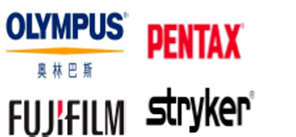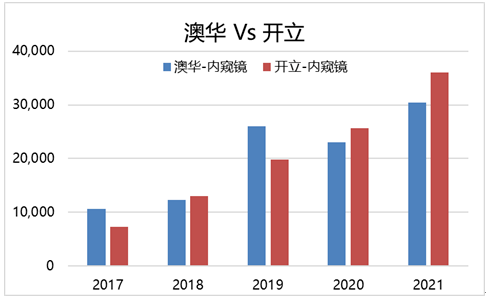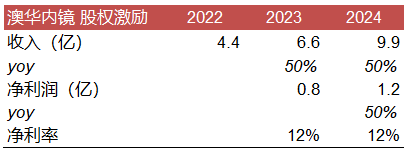Original userfield deployment investment2022-05-23
The centralized procurement of generic drugs in the field of pharmaceuticals and the negotiation of medical insurance for innovative drugs, as well as the centralized procurement of high-value consumables in the field of medical devices, have become policy uncertainties for pharmaceutical investment.
And we have also mentioned the trend of the centralized procurement policy in 2022 for many times. The centralized procurement of the alliance to be promoted in 2022 includes: Hubei-led Chinese patent medicine alliance procurement, Sichuan-led oral implant alliance procurement, these two alliances are expected to absolutely Most provinces will participate. At the same time, Fujian will lead the procurement alliance of electrophysiology and endoscopic staplers , Shandong will lead the procurement alliance of Chinese herbal pieces , Guangdong will lead the procurement alliance of new crown-related testing reagents and consumables , and Jiangxi will lead the procurement alliance of liver function biochemical reagents .
Then I will look again at the medical subdivision field, which clinical terminals have strong demand, good competition pattern, and domestic enterprises are on the rise.
This time, we are focusing on the field of endoscopy of medical equipment.
1. Medical equipment is a medical device that is not collected centrally
We have seen that most of the medical devices that have been collected in recent years are medical consumables, including high-value consumables such as coronary stents and artificial joints, and low-value consumables such as indwelling needles and new crown detection reagents.
For medical equipment, most of them use the form of independent procurement by hospitals, and some provinces and cities have bulk procurement negotiations, but it is completely different from the centralized procurement of generic drugs and consumables. But the latter has basically turned into a homogeneous competition, where the lower-price one gets a share, leading to the collapse of the price system.
2. Why can medical equipment avoid centralized collection?
Large medical equipment: The annual demand is low, and the price cannot be exchanged for the quantity. Taking CT and NMR as an example, the annual sales volume of several hundred units is already the leading domestic enterprise, while the national purchase demand for PE/CT is only dozens of units a year. Purchasing with quantity, if you want manufacturers to greatly reduce prices, you need to make up for it through sales, but there is so much domestic demand for large-scale equipment every year, and it is impossible to make up the price with quantity.
Diversified needs and technologies: For example, endoscopy has different application scenarios such as hysteroscopy, cystoscopy, and laparoscopy. Different departments have completely different needs for endoscopy. An endoscope is normally equipped with one mirror, but under different needs, more than three or four mirrors may be equipped. Moreover, the technologies are also diversified. Fluorescence endoscopes and 4K high-definition endoscopes also make it difficult to unify the price and standard for centralized collection of endoscope products.
3. Endoscope is the strongest new force in the field of medical equipment
In the field of medical equipment, domestic companies have made some achievements in the past few years, such as United Imaging’s large-scale imaging equipment, such as Mindray and Kaili Ultrasound. Mindray should now be the TOP2 in domestic ultrasound;
Let’s look at the medical equipment field with tens of billions of terminals and firmly controlled by foreign capital. Endoscopy may be the last fortress. In recent years, domestic enterprises have gradually emerged in the field of endoscopy, which is a field where typical import substitution has just broken through and domestic enterprises have just emerged.
We recall that 5 years ago, in the domestic endoscopy field, whether it is hard or soft endoscopy, there were basically no companies with sales of over 100 million, but now there are a number of companies with sales of 300-500 million, and they are still growing rapidly. enterprise.
Fourth, new technology is an opportunity for domestic enterprises of endoscopy
Endoscopes are typical medical equipment based on optical technology. Compared with products such as ultrasound, it is difficult to break through reverse engineering. Although there were brands such as Shenda in China in the early days, after so many years, there is basically no market share.
In recent years, there have been some changes in the technology platform in the field of endoscopy, which also allows domestic endoscopy companies to rely on new technologies to stand on the same starting line with the giants, bringing opportunities for import substitution.
1. CCD to CMOS
In the early days, the core optical component of endoscopes was CCD, and Japanese companies with good accumulation of optical technology had an advantage in the era of CCD technology. In recent years, optical devices have begun to use CMOS sensors, and domestic companies may have made breakthroughs. It attracted Weir shares to become a strategic investor, and also took a fancy to the CMOS industry capabilities of OmniVision acquired by Weir shares a few years ago. Therefore, the domestic electronics field is breaking through. In this context, the domestic endoscope industry can also use the domestic industry chain to break through the technical bottleneck of its own optical components, so as to be on the same starting line with Japanese companies.
2. 4K HD endoscope
Technology cannot be combined with pixels. This sentence does not only refer to domestic mobile phones. In the field of domestic endoscopy, the breakthrough point chosen by a large number of endoscopy companies is also 4K high-definition technology. Even Kangji Medical, which makes hard mirror consumables, also makes endoscopes, and chose to join hands with Hikvision, a leading camera company, to test the waters of 4K endoscopes. Endoscope consumables faucet + camera faucet, is there a chemical reaction under such a collision?
3. Fluorescence endoscopy: clearer development
Haitai Xinguang was valued by everyone at the beginning of the market, because of the technical characteristics of its fluorescent endoscope, it supplied Stryker’s full range of fluorescent endoscope products. Fluorescence makes the imaging of blood vessels and other tissues clearer through staining, and can detect lesions that are not easily observed by white light imaging. Therefore, fluorescence endoscopy can become a differentiated technology, which can locate lesions more effectively and reduce intraoperative damage, so as to achieve precise treatment.
4. 3D endoscopy: a tool to shorten the learning curve for new doctors
Before we saw the approval of the minimally invasive endoscopic medical robot, the first approval was the dragonfly eye three-dimensional electronic laparoscopic endoscope, which is also a new technology that has become popular in the field of laparoscopy in the past decade. 3D medical imaging technology helps doctors better perceive depth, space and position, accurately identify the shape, structure and traction direction of tissues and lesions, and avoid damage to small objects such as blood vessels and nerves, thus greatly reducing misdiagnosis and procedural operations Errors can improve the speed, accuracy and precision of surgery.
5. Disposable endoscope
Although conventional endoscopes are sterilized every time, cross-infection is inevitable, putting patients at risk of hospital-acquired diseases. In recent years, the research and development trend of endoscopes is to make disposable endoscopes, which not only reduces the procurement cost of hospitals, but also reduces the cost of using the whole process for patients.
Disposable endoscopes have just started, and there will be less than 20,000 operations in 2020, but it will be the fastest growing endoscope segment in the future.

Nanwei Medical, a leading company in flexible mirror consumables, chose disposable endoscopes as a breakthrough, and the visualization product line is also an important driving force for Nanwei’s future development. Disposable choledochoscope has been approved for sale in 21 years. Disposable bronchoscope is expected to obtain three certificates in China, EU and the United States in 22 years. There will be products such as disposable ureteroscope in the future. Disposable endoscopes are already an important starting point for leading consumables companies to turn to endoscopy equipment.
5. Domestic endoscopy enterprises are rising at the right time

1. Kaili + Aohua: soft mirror duo
These two endoscope brands are often compared by everyone. Indeed, the sales scale and product positioning of the two are very similar, and there is a relatively large gap with the third place. Therefore, in the future of soft mirror field, breaking through the monopoly of Olympus will depend on the domestic endoscopy duo. The guidance given by the opening is that the compound growth rate of the endoscopy business will be 50% in the future, and Aohua has given its own equity incentive target of 1 billion in three years.


2. Mindray Medical: A New Direction for Device Giants
Mindray’s endoscope business accounts for a small proportion of the overall revenue, but it is one of the fields of minimally invasive surgery, veterinary use, and AED that Mindray will focus on developing in the future; Future expectations for this product line have doubled for several years in a row.
3. Haitai Xinguang: The turn of an international brand OEM
Haitai Xinguang is the foundry company of Stryker, the global giant of endoscope hard mirrors. Stryker’s fluorescent endoscopes are all purchased from Haitai Xinguang. Therefore, when companies with such product quality decide to turn around and develop the domestic market, they have to let everyone pay attention. At the beginning of 2022, Haitai Xinguang and Sinopharm Instruments joined forces. Such a combination of high quality and wide coverage is worthy of the market to imagine what new players will be ushered in by domestic rigid endoscopes in the future.
4. Xinguangwei Medical: Endoscope Innovative Equipment Enterprise
The shortest established, but the fastest growing Shin Kong Medical is preparing for an IPO in Hong Kong stocks. We can see from its prospectus that although it was only established in 2016 and only obtained a certificate in 2018, in just a few years, it has deployed 4K high-definition Endoscopy, disposable endoscopy and many other fields of endoscopy. At the same time, the background is profound. Among the co-founders, one is from Olympus Endoscopy, and the other is the founder of Peijia Medical; strategic investors include global device giants such as Medtronic and listed company Weil Companies in the CMOS optical device industry chain such as shares, as well as well-known funds such as Hillhouse and Eli Lilly. Therefore, Xinguangwei Medical, an innovative device company that is very in line with the appetite of the asset market, is now small in scale, but has a high vision and goals.
6. Summary
Among medical devices, medical devices will not be collected centrally. Among medical equipment, the field of endoscopy has the fastest growth rate. We have analyzed the technical drivers and major players in this field, and hope to emerge from the leading domestic endoscopes in the future
Pay attention to deploying troops and investing – more pharmaceutical dry goods
Welcome to the ” userfield medical chat ” exchange
This topic has 23 discussions in Snowball, click to view.
Snowball is an investor’s social network, and smart investors are here.
Click to download Snowball mobile client http://xueqiu.com/xz ]]>
This article is reproduced from: http://xueqiu.com/4777061674/220944026
This site is for inclusion only, and the copyright belongs to the original author.